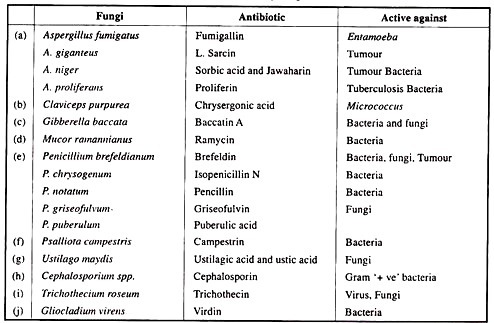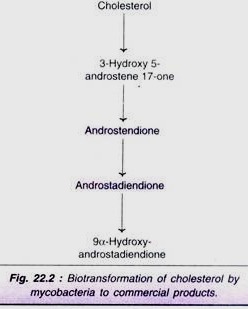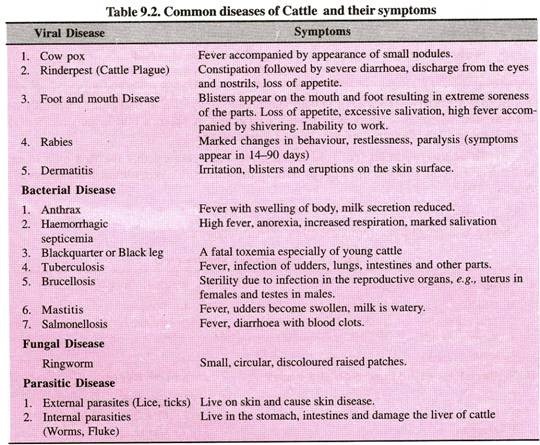After reading this article you will learn about Soil:- 1. Introduction to Soil 2. Meaning of Soil 3. Composition 4. Soil Layers 5. Basic Properties 6. Testing of Properties.
Contents:
- Essay on the Introduction to Soil
- Essay on the Meaning of Soil
- Essay on the Composition of Soil
- Essay on the Soil Layers of Earth
- Essay on the Basic Properties of Soil
- Essay on the Testing of Soil Properties
Contents
Essay # 1. Introduction to Soil:
Soil is the surface layer of earth on which the human civilization depends for its existence. Actually soil represents the loose upper crust of the earth surface distinctly different from the underlying bed rock.
Its depth, colour, and composition vary from place to place, but all soils are common in consisting of inorganic (mineral) and organic matter, water, and gaseous phases. Every soil is made up of a succession of layers, collectively known as soil-profile, reaching down to the parent material.
The soil-profile consists of two or more horizontal layers, called horizons. The soil horizon may vary in thickness, mineral composition, and structure; they are indicated by the letters A1, A2, A3, B1, B2, B3, C1, etc. A1 horizon is the uppermost or surface layer of the soil and its fertility level is very important from viewpoint of an agriculturist.
Soil fertility depends not only on the presence of inorganic and organic substances, but also on the presence of various species of microorganisms which influence the qualitative composition of the soil.
The existence of soil, the store-house of Nature, furnishing substances for all plants, animals, men, and other organisms, dates back to uncountable periods, even long before the man appeared on the scene. Vast number of plants, animals and finally the man populated the earth and the soil supported them all entirely without human assistance.
That, soil is vastly complex material on the face of earth is the fundamental truth to be understood in its study. Being a common commodity, it means a different thing to a different man in different pursuit. A geologist would preferably consider it to be the outer loose crust of the earth surface; quite distinct from the bed rock lying beneath.
To a farmer, it is a medium to grow his crops in and from which the plants obtain their mechanical support and many of their nutrients. Chemically, the soil is endowed with a magnitude of organic and inorganic substances not found in the underlying strata; indeed it functions as nature’s chemical laboratory in which various dissolutions and synthetic processes go on continuously in a hidden manner.
A lay man, however, is always of the opinion that soil is dust, essentially a dead material, sustaining nothing like life within it. With regard to origin and evolution of life, it can be considered that soil is the depository of all lives within which are carried out most of the transformations that enable life to continue.
Ecologically, soil is the most dynamic component (lithosphere) of the global environment encompassing distinct communities of organisms in its realm.
For a building engineer, the soil is a substratum on which structures can be built. But nothing could be farther from the truth, a microbiologist would say. For him, soil appears to be a dynamic body on the surface of the earth, pulsating with life due to presence of myriads of microorganisms.
Essay # 2. Meaning of Soil:
The word ‘soil’ is derived from the latin word ‘solum’, which means floor or ground.
Soil is a natural formation resulting from the transformation of surface rock by combination of climate, plant and animal life with ageing.
Soil is formed through following steps:
(a) The formation of regolith by the breakdown of the bed rocks process is called weathering or disintegration.
(b) The addition of organic matter resulting from the decomposition of plant and animal residue and reorganization of these components by soil material of varying depths.
‘Petrology’ is the science of rocks which forms soil. ‘Pedology’ is study of soil which includes origin of soil, its classification and its description. ‘Edaphology’ is the study of various properties of soil in relation to growth, nutrition and yield of crops.
Soil can also be defined as natural body which is formed at the boundary between lithosphere and biosphere by inter-chains of all factors involved in Soil formation considering both living and dead.
So soil contains not only minerals but organic (humus) and organo-mineral (complex or chilate) compounds. The soil contains 13 elements in general out of 16 required by plants for growth. The soil becomes polluted when the quantity of 13 elements decreases or increases irregularly due to industrial effluents.
Several hazardous chemicals and the mountains of wastes are ultimately dumped on the lands. Dumping of industrial and municipal wastes causes toxic substances to be leached and seep into the soil and affects the ground water course.
Modern agricultural practices introduce numerous pesticides, fungicides, bacteriocides, insecticides, biocides, fertilizers and manures, resulting in severe biological and chemical contamination of land. Apart from all these, direct pollution of soil by deadly pathogenic organism is also of major concern. The properties of soil change with pollution and sometimes soil losses its fertility permanently.
Essay # 3. Composition of Soil:
The chemical composition of soil is much diversified and depends upon chemical composition of rock but in general the following elements are present in it.
In many soils of arid areas the following water soluble salts have also been examined:
Except CaCO3, MgCO3 and CaSO4 all other salts dissolve completely in water.
Essay # 4. Soil Layers of Earth:
Soil is made up of rock which has been transformed into other layers due to vegetation and various micro and macro-organisms.
Several factors contribute to the formation of soil from the parent material. This includes the mechanical weathering of rocks due to temperature changes and abrasion, wind, moving water, glaciers, chemical weathering activities, and lichens. Climate and time are also important in the development of soil.
In extremely dry or cold climate soils develop very slowly, while in humid and warm climates soils develop more rapidly. Under ideal climatic conditions, soft parent material may develop into 1 cm of soil within 15 years. Under poor climatic conditions, a hard parent material may require hundreds of years to develop into soil.
Mature soils are arranged in a series of zones called ‘soil horizons’. Each horizon has a distinct texture and composition that varies with different types of soils. A cross-sectional view of the horizons in soil is called ‘soil profile’.
The top layer or the surface litter layer, called the ‘O-horizon’. It consists mostly of freshly-fallen and partially-decomposed leaves, twigs, animal waste, fungi and other organic materials. Normally, it is brown or black. The uppermost layer of the soil is called the ‘A-horizon’. It consists of partially-decomposed organic matter (humus) and some inorganic mineral particles. It is usually darker and looser than the deeper layers.
The roots of most plants are found in these two upper layers. As long as these layers are anchored by vegetation, the soil stores water and releases it in a trickle throughout the year instead of in a force like a flood. These two top layers also contain a large amount of bacteria, fungi, earthworms, and other small insects, which help to recycle soil nutrients and contribute to soil fertility.
The ‘B-horizon’, often called the subsoil, contains less organic material and fewer organisms than the A horizon. The area below the subsoil is called the ‘C- horizon’ and consists of weathered parent material. This parent material does not contain any organic materials. The chemical composition of the C-horizon helps to determine the pH of the soil and also influences the soil’s rate of water absorption and retention.
Soil with approximately equal mixture of clay sand, slit and humus are called loams.
Essay # 5. Basic Properties of Soils:
i. Acidity and Alkalinity of Soils:
The pH of a good soil should be about 7 but due to industrial effluents the pH increases or decreases causing pollution in soil.
Soils are characterized by the following pH values:
pH value is important as it regulates certain properties of Soils. If pH is below 7 (acidic soil), the composition of cation reveals hydrogen and aluminium, the fraction of which increases with decreasing pH while if pH is above 7 (basic soil), soils are saturated with magnesium and calcium and in some cases with sodium.
ii. Colour and Tint:
The colour and tint of soil depend on the minerals present in it and humus components.
On the basis of colour, the following names have been given to the soil:
(1) Black soil
(2) Grey soil
(3) Red soil
(4) Yellow soil
The black and grey colours indicate different soil contents of humus and the colour of parent rock.
The red soil indicates that it is rich in iron or Fe2O3 while yellow colour suggests the presence of hydrated compounds namely Fe (OH)3. In some tropical areas, green soil is also found indicating the presence of high concentration of ferrous compounds such as ferrous oxide etc. The white soil relates to the presence of calcium carbonate in excess.
The tint of the soil is made up of two or three colours e.g., it can be brown-red, red-brown grey-black grey.
iii. Soil Texture:
Soil is the thin layer on the surface of the Earth on which the living beings of the earth survive.
Based on the size of the particles it can be classified into various types:
a. Sandy soil:
This type of soil has the biggest particles. It is granular and consists of rocks and minerals particles that are very small.
b. Silty soil:
Silty soil is considered to be one of the most fertile soils. It is composed of minerals like quartz and fine organic particles.
c. Clay soil:
Clay is a kind of material that occurs naturally and consists of very fine grained material with very less air spaces.
d. Loamy soil:
The soil consists of sand, slit and clay to some extent. It is considered to be the perfect soil. Its texture is gritty.
e. Peaty soil:
This kind of soil is basically formed by the accumulation of dead and decayed organic matter; it naturally contains much more organic matter than most of the soils.
f. Chalky soil:
Unlike peaty soil, chalky soil is very alkaline in nature and consists of a large number of stones.
Soil texture is an important part and with the help of it, we can define mineralogical and chemical composition. As soils have densely packed structure and capillary pores hence they can retain large quantities of water. They check the passage of water as capillaries are small in diameter and they get plugged by swelling.
The structure has unique property of absorbing large quantities of nutrients. Sandy soils are very poor in nutrients and need organic fertilizers and minerals. Humans and clay human’s complexes have best binding capacity due to high exchange capacities. Whenever industrial effluent combines with humus it changes the exchange capacity resulting in total loss of the soil.
iv. Specific Mass of Soil:
It is ratio between weights of solid phase of soil (without pores) to the weight of water in same volume at 4°C
m = m1/m2
where m = specific mass of soil; m1 = weight of solid phase of soil and m2 = weight of water at 4°C.
The specific mass changes with change in the chemical composition and mineralogical factors. It is lower (about 2-4) in human soils and high in rocky soils.
v. Porosity of Soils:
The porosity P can be defined as:
P = d – dv/d × 100
where d = specific mass and dv = volumetric mass of the soil. The porosity depends upon texture and aggregation of soil.
The good soils have porosity as follows:
vi. Soil Air:
Good aeration of soil is important for maintaining its biological activity. Good soil aeration is also helpful for the growth of plant roots and other biota.
The soil contains the following gases:
vii. Hygroscopic Moisture (Water):
This is the amount of water in soil. It depends upon relative humidity of the atmospheric and soil air.
The hygroscopic moisture in soil depends mainly on the following factors:
(1) Humus content
(2) Chemical composition
(3) Texture
(4) And other parameters
It depends on the adsorptive capacity for the soil and the value is generally found between 0.5 to 1.0% in tropical soils.
viii. Water Capacity of Soil:
It depends upon water capacity and water permeability. The water capacity can be defined as the amount of water retained by capillaries when soil is saturated with water from beneath. In other words it is the maximum quantity of water which the soil can retain in it.
The water permeability is the capacity of the soil to allow water through it. It depends on swelling, aggregation and texture. Generally the higher the water permeability the more distinct is the soil structure for same texture of soil. The capillary of soil reflects their energy for retaining water.
The mean values of field water capacity are as follows:
(1) Clay soils pF = 3.0 (1 atm)
(2) Loamy soils pF = 2.5 (1/2 atm)
(3) Sandy soils pF = 2.0 (1/10 atm)
where pF = logarithm of water layer pressure in cm.
ix. Soil Temperature:
The change in temperature changes the properties of the soil. The colour, moisture, adsorption and water content of the soil vary with variations in temperature.
x. Colloidal Nature of Soil:
Colloids can be defined as particles varying in size between 0.2 to 0.001 p and the three groups depending on the size can be classified as follows:
As colloids are charged particles hence they can be divided into two groups:
(a) Electro-negative or acidoids:
They consist of clay minerals, humic acid and complexes of a bi and trivalent iron with silica.
(b) Electro-positive or basoids:
Such type of soils includes hydroxides of iron and aluminium.
The exchange reaction and retaining capacity of soils depends upon their charges.
xi. Composition of Organic Part and Micro-Organism:
The organic matter of the soil contains bulk of water and the following substances:
1. Proteins
2. Carbohydrates
3. Lignin
4. Lipids
5. Waxes
6. Resins
7. Tannins
8. Organic acids
9. And other compounds
The organic part varies from 0.5 to 25 (tons/hectare) depending on the type of vegetation, climate and formation of soil. The humus is dark colloidal substances impregnating the mineral part of soil and giving a dark colour to its upper horizons. The humus substances improve the fertility of the soil.
They enrich the soil with bases and nutrients such as nitrogen and phosphorous. They regulate the acidity of the soil and contents of mineral and organo-mineral compounds of iron.
The following types of micro-organisms are found in soil:
(1) Bacteria
(2) Fungi
(3) Algae
(4) Actinomycetes
(5) Protozoa.
The micro-organisms can be divided into two parts:
(1) Aerobic, and
(2) Anaerobic.
(1) Aerobic:
These are the organisms which require oxygen for their living. For example, fungi, bacteria and actinomycetes. They serve a base for nitrification.
(2) Anaerobic:
The microorganism which does not require oxygen for their living, as saprophytes, autotrophic and paratrophic are called anaerobic microorganisms. They help in anaerobic decomposition of cellulose, reduction of nitrates to nitrous acid and molecular nitrogen (denitrification) etc.
Essay # 6. Testing of Soil Properties:
The following parameters can easily be determined:
i. pH for knowing the acidity or alkalinity.
ii. Phosphate as P2O5
iii. Lime as Ca(OH)2
iv. Magnesium as MgO
v. Potash as K2O
vi. Nitrogen as NO3
vii. Nitrogen as NH4
viii. Conductivity
ix. Elements such as Zn, Pb, K, Na, Fe etc.
x. Total carbon
These properties have direct bearing on the productivity of the soil and for deciding on reclamation measures.
The above parameters can also be determined by the following methods:
The pH is determined by pH meter and conductivity is measured by conductivity meter. The elements such as sodium, potassium, zinc, iron, magnesium, calcium etc. can easily be determined by the instrument flame photometer. For determination of total carbon, phosphorous, nitrogen etc. various titration techniques involving different reagents are applied.
A good soil should have the following characteristics:







